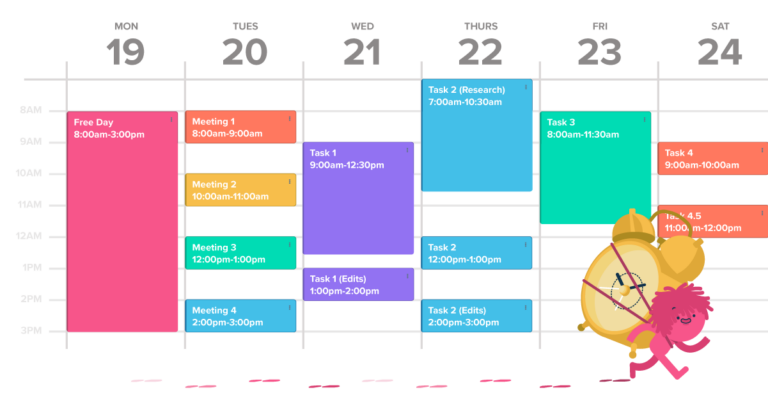What Is a Term Paper? Definition and Guidelines
If you’ve only just started university and have already been slammed by this frightful word, welcome to this new level of study! University is not only about cramming from tons of books: It should also, ideally, foster critical thinking, teach you how to argue your points effectively, and help you develop research skills. And you will need all three of these to write a stellar term paper!
But hang on a sec, what is a term paper? A term paper is a longer type of research-based homework on a particular topic. Term papers range from 15 to 25 pages because any less is considered lazy and any more is too much for any professor to read (trust me, I teach at a university).
In general, you should be free to select a topic for your term paper, but regardless of whether you’re free to do it or are assigned one, term papers mostly have the same goal. Namely, they test your ability to formulate and support your arguments and locate yourself in a particular theoretical framework. Sound scary yet? Don’t worry! I’m here to illuminate some of the vaguer aspects of term paper writing.
Structuring Your Term Paper Outline (+ Sample Term Paper Outline PDF)
Before you begin writing, it’s advisable to have an idea about where exactly your writing is going. The best way to achieve this is to write an outline, or (as we sleep-deprived academics like to call it) an abstract. An abstract is a short description of your paper/article/project that outlines your main research questions and the theoretical framework you will be working with.
I generally suggest that people start with a very simple pyramid structure when writing an abstract:
- The foundation. This is where you introduce a broad, general statement on the topic of your choice. You can clarify and specify this in a few more sentences to ease your readers into the research project.
Example: Contemporary drama boasts the power to transform the audience through careful selection and crafty delivery of impactful images. By creating faux-reality, drama sometimes appeals to the affective side of the audience in order to provide commentary on a number of social and psychological issues. Duncan Macmillan’s Every Brilliant Thing capitalises on its affect-inducing potential, tackling the issue of suicidal depression.
- The middle. In this part of the outline, you state the aims of your study. Some of my favourite phrases to signal your intentions include: this paper aims to shed light on, the goal of this research paper is, the idea behind this term paper is, etc. Feel free to add some powerful verbs of action such as examine, assess, illuminate, discern, analyse, cross-reference, etc. to emphasise your ideas.
Example: This paper aims to explore how the play creates a more realistic setting by deviating from the audience’s expectations, thus blurring the line between drama and real life. It may be argued that simulated reality, exemplified through a number of exaggerations, impacts the affective component in the audience’s attitude formation and that its neglect of the cognitive reinforces the transformative power of Every Brilliant Thing.
- The top. The final part of your outline should highlight coherent hypotheses or research questions that your study will answer. While academic papers usually dream of some originality, this should not concern you yet – you don’t need to invent hot water in your term papers, but as you gain experience, novel conclusions will become easier to form.
Example: This paper will then take a final look at how the structure of the play simulates depression in order to sensitise the audience and to which extent it attains its goal of conveying the message of the universality and repercussions of the disease.
Writing an outline is a good way to organise your thoughts, figure out what kind of books you need, and anticipate your results.
In the abovementioned examples, the books you’d need would have to do with theatre, psychological influences, and simulation of reality.
This process applies to any subject. The outline can be more detailed, but it needn’t go over 300 words. A word of advice: if you cannot summarise the key points of your topic in 300 words, you should do some more brainstorming until you reach the specific goal.
PS Check out this excellent term paper outline sample!
Term Paper Format – The Safety Net
Each term paper should follow a relatively familiar structure and way of arguing your points. Let’s start with the basics:
- Cover page. This is where your title goes (centred, bolded, pt24 ideally). The cover page should also list your personal details, such as name, address, email, student ID number, phone number (maybe), and the institution and the department for which you are writing your term paper. Each university tends to have its own layout for the cover page, but the rule of thumb is that institutional information goes above the title, whereas personal information is below.
- Table of contents – your readers need to know what to expect!
- Introduction. This is a more elaborate version of your project outline. You should specify what the paper is dealing with, what theoretical framework you’re using, and what your hypothesis is. My pro tip is to write the introduction last because term papers tend to grow as you write and you may end up with vastly different results from those you had expected.
- The body of the paper. This is where exciting things are happening! Your case studies, experiments, and results should be explored and described in detail. General parts of the body of the paper include:
- Theoretical framing. Explain which theories or ideas you’re using.
- Methodology. This is mostly present in scientific papers where you must explain what methods will guide your study (i.e. experiments).
- Analysis. Close readings, experiments, data surveys – whatever your project is doing, it should be doing it here.
- Discussion. Feel free to start interpreting your results in this section. A great paper does not simply list data – it compares and contrasts. You must be able to draw conclusions about what your analysis has shown you. Results as expected? Hypothesis confirmed. Results not ideal? There’s something to write about. Consider why something turned out differently and what that means for future studies.
- Optional: pitfalls and future improvements. Again, this is more present in sciences than humanities, but you could address possible pitfalls or blind spots in your study and suggest how they can be improved upon in the future. You can also talk about what lines of research your project can inspire.
- Conclusion. Time to wrap it all up. Briefly summarise the key points of research and main results. If you haven’t already devoted a separate section of the paper to this, you can also write about indications for future research in your conclusion.
Term Paper Structure Example
To give you a more precise example of a structured term paper, here’s a more detailed structure of the above-described example on theatre:

Still Unsure about How to Write a Term Paper?
Excellent, I love good questions! The truth is, writing a term paper is a labour of love (it is hard labour, especially if you’re carrying all the books!), so I will give you some tips on how to make it an enjoyable experience.
- Pick a topic you’re interested in. There’s nothing you can say to convince me that your subject is so absolutely wretchedly uninteresting that you simply cannot find such a topic. You just haven’t done your work yet. Start digging and follow the internet clicking abyss until you stumble upon something that takes your fancy. My master thesis idea was based on a single line I read in a magazine about Neil Gaiman’s American Gods – I managed to turn it into 80 pages, two scientific articles, and two talks just fine, even though it may not have been researched previously. So, whatever you’re writing about, there’s got to be a fun angle to it.
- Start reading. You cannot write a term paper from nothing. Once you have a general topic and an outline, you should start collecting your materials. Check out your library and inform yourself about the inter-library loan. Get acquainted with various scientific databases like JSTOR and ResearchGate – your university probably has wide access to many knowledge repositories you can use through an official VPN or library computers. Search by keywords and titles and save everything that sounds interesting. Learn to recognise important elements and ideas in those texts and be ready to use them to support your arguments.
- Know when to stop, too. Sometimes you’ll find yourself deep in the excitement of learning something new, but there will come a point when you realise you’re ready to put what you’ve found into your own words. Set up an experiment, survey, or study and follow up on the results. In humanities, this may mean a closer analysis of selected texts. This is where you start writing – again, leave the introduction for later and jump right into the core of the work.
- Mind the style. When writing a term paper, you need to keep certain standards up. Term papers are written in the ‘academic’ style and involve lots of passive voice, verbs of enlightenment (illustrate, examine, assess), and words marking cause-effect relationships. Don’t be afraid to use transition words to make your text and conclusions flow easily.
- Cite properly! Oh, how I hated learning all the citation styles when I was just starting out, but once you do learn the ropes, it gets easier. It’s a bit of drudgery, but my advice is to write down your sources meticulously as you go along. As soon as you cite someone, make sure you add the full citation at the end of the text (I like having them in a separate document), and don’t forget in-text citations. Depending on what field you’re studying in, you will have different citation styles (like MLA, Chicago, APA) at your disposal – make sure you check the requirements for each course and consult the corresponding websites with guidelines.
- Don’t plagiarise! Each paper you submit will be run through the plagiarism checker. Trust me, you won’t have much fun trying to explain why you haven’t cited sources properly. Stealing intellectual property is a crime like any other and can have you kicked out of the course or even prosecuted. When paraphrasing, you still need to cite the original creator. Don’t take your professors for fools, they’ve been in this business for a long time and can recognise if something is not coming from their students. Moreover, they usually have a good idea of each student’s capabilities, writing styles, and ideas long before the paper is handed in – don’t make them question the authenticity of your writing.
Don’t Forget about Term Paper Editing!
And there goes the last-minute churning of text and hitting send before passing out for the next two days. Writing a term paper at university should not be left for the last minute. If you’re a chronic procrastinator, it’s time to learn to organise your time and devote enough of it to your assignments.
When you’re done with writing, you should leave your paper alone for a few days – sleep on it, as they say. You can treat this distance like any good study break – it’ll help you clear your mind, prevent resentment towards the subject, and allow you to see it through new eyes. Before submitting, re-read your text carefully and edit the writing. Weed out spelling and grammatical errors and prune unnecessary examples or repetitive statements. A good way to do this is to change the font or even font size in your writing software – this engages your perception and makes spotting mistakes easier.
Editing is also the time to consider how your arguments are holding together and whether you need to add or replace some text and/or rearrange your points. It’s an extremely important part of the writing process, but you shouldn’t overdo it either. Perfectionism can get you into the editing spiral that usually leads to messing up parts that were initially good. A few re-reads are fine, but anything more and you might as well start to rewrite the whole thing.
The last question to consider is whether you are happy with your result. Remember, this is a term paper and you’re still learning, so nobody expects it to be perfect, but you should be satisfied with what you’ve accomplished.
The Key Takeaways of Writing a Term Paper
Writing a term paper is a longer commitment than a simple essay. To ensure your success, start well ahead of time or you might find yourself rushed and stressed.
- Try to find a topic of personal interest to you.
- Scribble an outline to work out your angle or general direction of the paper.
- Read enough materials. Your library and online databases are your friends.
- Form hypotheses and set up experiments or analyses.
- Get down to business (and stop procrastinating!).
- Don’t forget to edit the paper well and format it correctly.
Good luck!
Source: Danica Stojanovic, ‘Theatrical (Hyper)Reality: The Effects of Breaking Formal Boundaries in Every Brilliant Thing’, Over The Horizon, London, 2020, pp. 81‑100.







